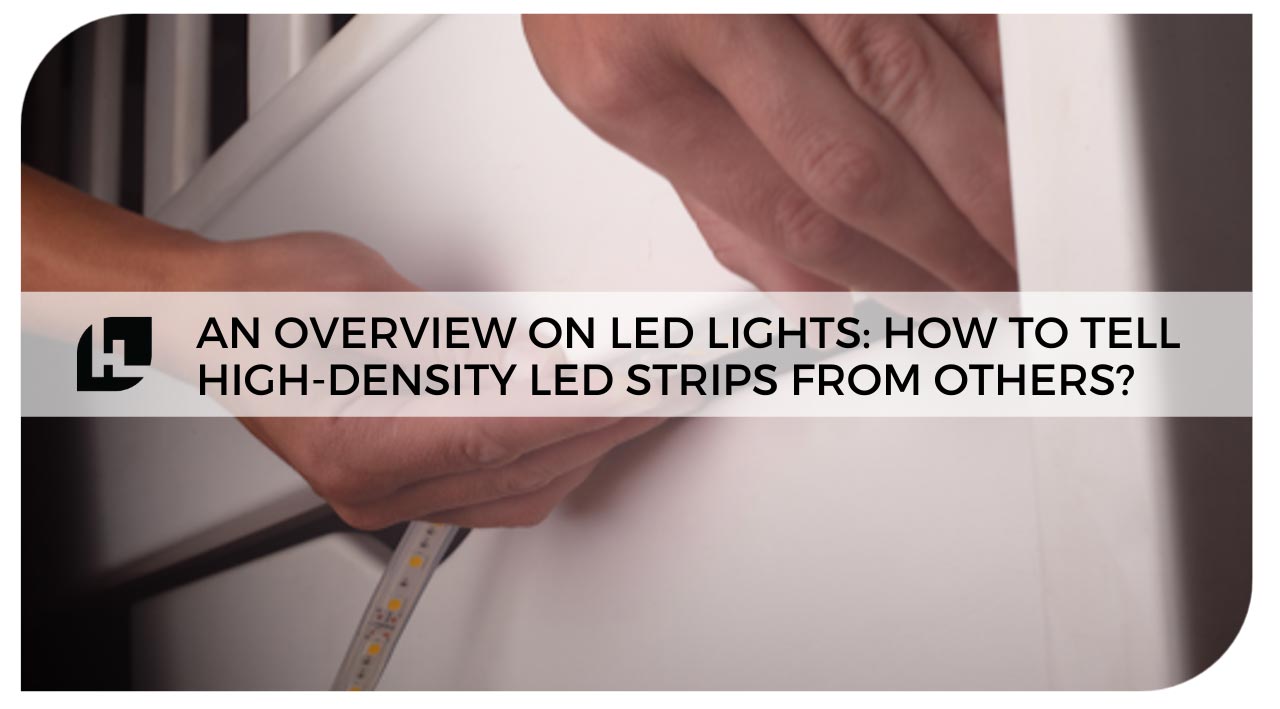High-density LED strip lights are becoming very popular now, in part, because of their high customizability.
One can cut strip lights into whichever length they want. They can also adjust the brightness level of the lights or opt for a multicolor strip light. Last but not least, one can also choose to buy a high-density LED strip light as opposed to a standard-density strip light.
Such customizability lends designers and DIY-ers full control over their projects. Learn more about how strip light density can impact your project, so you can decide whether to splurge a bit more and purchase a high-density strip light or settle for a standard one.
What is High-Density LED Strip Light?
LED strip lighting comes in the form of a flexible circuit board line with several LEDs. As such, there’s some variation in both the length of the circuit board and the number of LEDs attached to it.
The density of LED strip lights refers to how many LEDs are attached to a circuit board. When shopping, one can identify the density by looking for markings such as 30/60/120 LEDs per meter or 9/18/36 LEDs per foot.
High-Density vs. Standard-Density LED Strip
Because LEDs have adjustable brightness, and they generate minimal heat, the density of an LED strip does not really affect its light output or longevity. However, it can change the appearance of the lighting.
Standard-density LED strips have more space between each LED compared to high-density LED strips. Because of this, the former tend to have a dotted light appearance, which is sometimes called spotting.
This appearance is caused by the gaps in the LEDs. Though this appearance is not an issue and is most commonly a matter of preference, it is an important consideration when choosing between standard and high-density LED strips.
As high-density strips put more LEDs in one strip, each LED is placed closer to the other. This effectively cancels out any dots or spaces between each LED, resulting in a more seamless lighting appearance.
Of course, this appearance comes at a premium. As LEDs are the most expensive components of an LED strip, putting more LEDs in one strip makes high-density LED strips more expensive. Not to mention, the higher number of LEDs means increased power draw. For those looking to minimize electric consumption, this is also a consideration.
How to Identify High-Density LED Strip from Others
When shopping for LED strips, the easiest way to identify high-density LED strips is by their appearance. When side by side with a standard-density LED strip, it has smaller gaps between each LED.
Lastly, one can check the label of the LED strip. If it contains 60 LEDs per meter or 18 LEDs per foot, it’s standard-density. If it contains 120 LEDs per meter or 36 LEDs per foot, it’s high-density. Not to mention, the label very likely contains the words high-density as well.
Buy High-Density LED Strip Lights
Enjoy seamless lighting without dots or breaks with high-density LED strip lights.
Go to HitLights today and check out our high-density LED Strip lights in 10ft. and 16.4ft. They come with UL-listing and a six-year warranty, so you can rest assured that your project will go smoothly!
If you have more questions, our team of LED experts can address them. Contact our team of LED experts at HitLights today!


